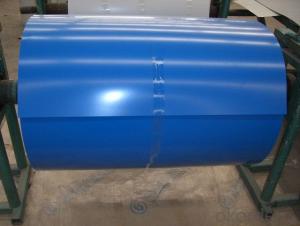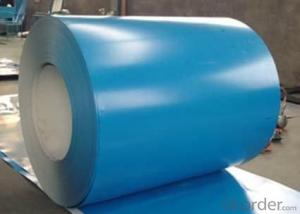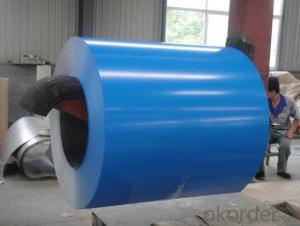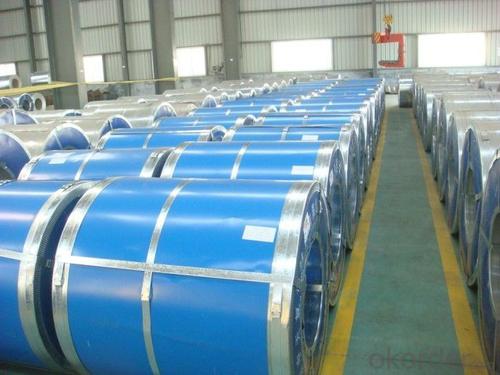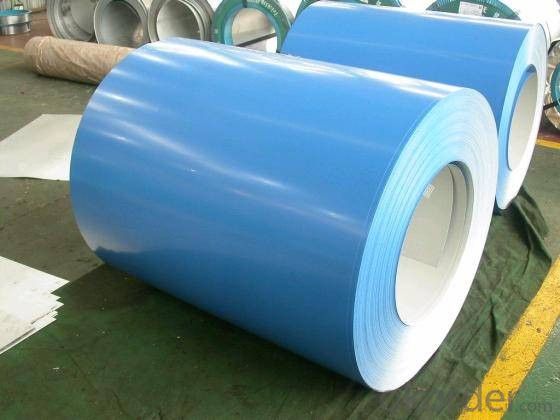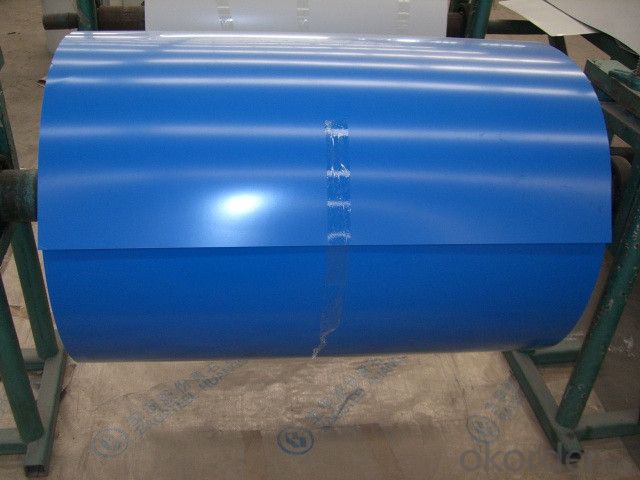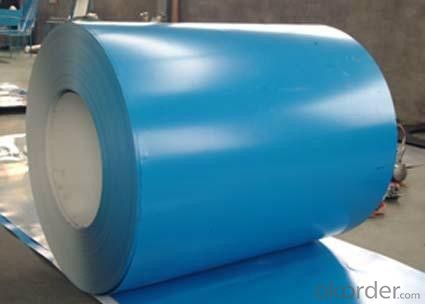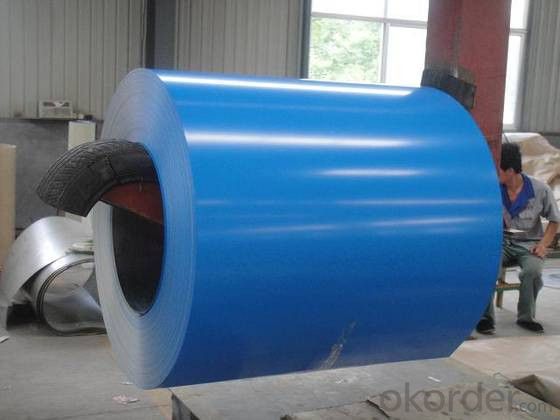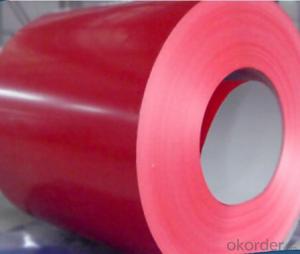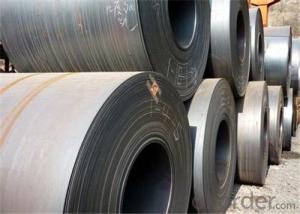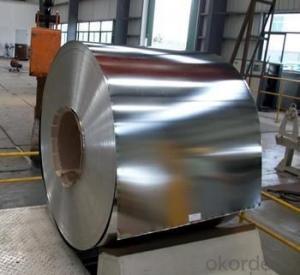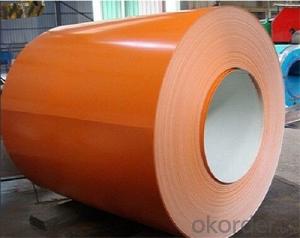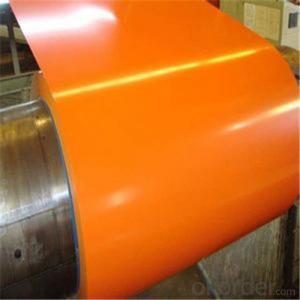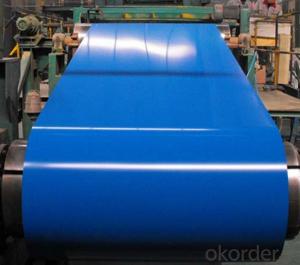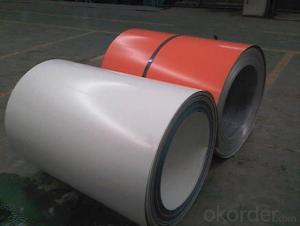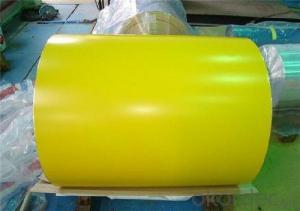RAL Scale Z70 Prepainted Rolled Steel Coil for Construction Roofing
- Loading Port:
- Shanghai
- Payment Terms:
- TT OR LC
- Min Order Qty:
- 25 m.t.
- Supply Capability:
- 28000 m.t./month
OKorder Service Pledge
OKorder Financial Service
You Might Also Like
Structure of RAL Scale Z70 Prepainted Rolled Steel Coil for Construction Roofing

Description of RAL Scale Z70 Prepainted Rolled Steel Coil for Construction Roofing
Prepainted Rolled steel Coil is a kind of coated steel coil/sheet. With the cold rolled steel of different strength and thickness as substrate, it is produced through applying Al-Zn coat on both faces by hot dip process. In its coating, Al accounts for about 55%, Si 1.6%, while the remaining is Zn. Aluminum zinc coils enjoys both the physical protective feature and durability of Al and the electrochemical protective property of Zn. And its surface has bright silver color and regular embossed-like figure, which are highly decorative.

Main Feature of RAL Scale Z70 Prepainted Rolled Steel Coil for Construction Roofing
1.Corrosion resistance: It mainly depends on the aluminum protection. When the zinc being worn, the aluminum will form a dense layer of aluminum oxide, resist corrosion material to prevent further corrosion inside.
2. Heat resistance: Aluminum zinc alloy steel sheet has excellent heat resistance, can withstand high temperatures over 300 centigrade, and is similar with aluminized steel high temperature oxidation resistance. It often used in chimney pipes, ovens, fluorescent lighting device and the device cover.
3. Heat reflective: Galvanized steel plate heat-reflective high rate is twice as galvanized steel, often used to make insulation materials.
4. Economy: Because density of 55% AL-Zn is smaller than the density of Zn, so in the same weight and thickness of Galvanized zinc layer, aluminum-zinc steel plate is larger area more than 3% of galvanized steel sheet.
Applications of RAL Scale Z70 Prepainted Rolled Steel Coil for Construction Roofing
1. Construction and building: roofing; ventilating duct; handrail; partition panel;etc.
2. Electric appliance: refrigerator; washing machine; refrigerator; DVD;etc.
3.Transportation: oil tank; road sign; etc.
4.Agriculture:barn; etc.
5.Others:vending machine; game machine; etc.
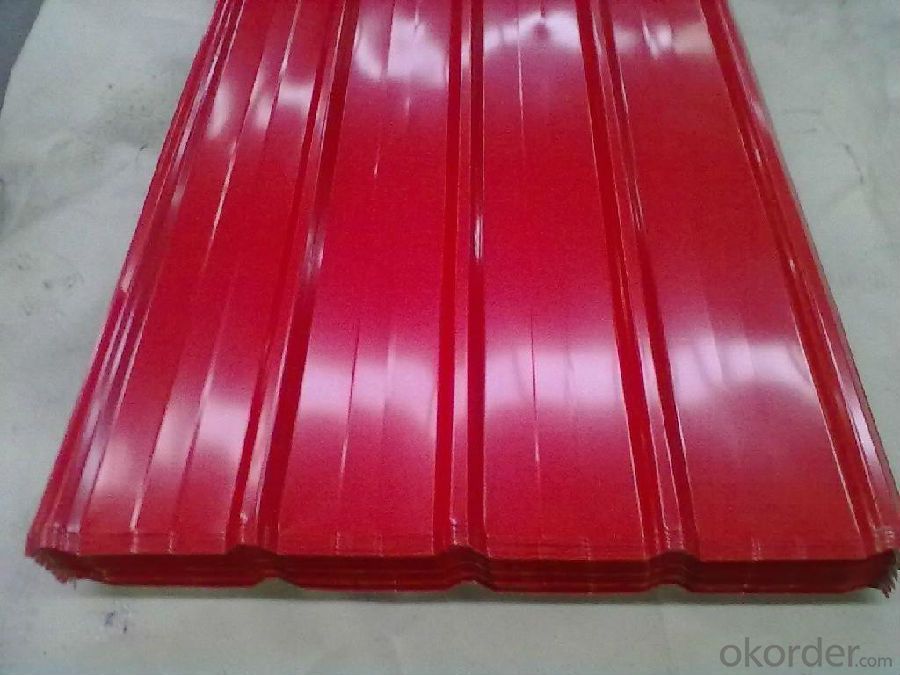
Specifications of RAL Scale Z70 Prepainted Rolled Steel Coil for Construction Roofing
Product | RAL Scale Z70 Prepainted Rolled Steel Coil for Construction Roofing |
Material Grade | SGCC / SGCH / DX51D+AZ, etc |
Thickness | 0.2-3.0mm |
Width | 600-1500mm |
Tolerance | Thickness: +/-0.02mm , Width:+/-2mm |
Zinc-coating | AZ40-150g/m2 |
Technique | Raw material: Hot rolled steel coil --> Cold rolled_>hot dipped galvalume |
Surface | Dried, Chromated, Unoiled |
Spangle | Regular spangle , small spangle, zero spangle |
ID | 508MM |
Coil weight | 25MT max |
Export package | Cardboard inner sleeves, Waterproof paper, galvanized steel covered and steel strip packed |
FAQ of RAL Scale Z70 Prepainted Rolled Steel Coil for Construction Roofing
We have organized several common questions for our clients,may help you sincerely:
1. What is the minimum order quantity ?
Our MOQ is 50mt for each color. And we could give more discount if you make big order like 1000 tons and more. Further more, the more appropriate payment term your can offer the better price we can provide.
2. How long can we receive the product after purchasing?
Usually within thirty working days after received buyer’s advance payment or LC. We will arrange the factory manufacturing as soon as possible. The cargo readiness usually takes 15- 25 days, but the shipment will depend on the vessel situation.
3. How to guarantee the quality of the products?
We have established the international advanced quality management system ,every link from raw material to final product we have strict quality test;We resolutely put an end to unqualified products flowing into the market. At the same time, we will provide necessary follow-up service assurance.
- Q: What are the dimensions and weight range of steel coils?
- The dimensions and weight range of steel coils can vary depending on the specific application and industry. However, typical dimensions range from 0.15mm to 3.5mm in thickness, and from 600mm to 2,000mm in width. As for weight, steel coils can range from a few hundred kilograms to several tonnes, depending on the size and type of coil.
- Q: How do steel coils contribute to the agricultural sector?
- Steel coils contribute to the agricultural sector in various ways. Firstly, steel coils are used in the manufacturing of agricultural machinery and equipment such as tractors, harvesters, and irrigation systems. These machines are essential for efficient farming operations, helping farmers increase productivity and reduce labor costs. The strength and durability of steel coils ensure that the machinery can withstand the harsh conditions of the agricultural environment. Additionally, steel coils are used in the construction of storage facilities and warehouses for storing agricultural products. These structures need to be strong and resistant to external elements to protect the crops from damage. Steel coils provide the necessary strength and stability required for constructing these storage facilities, ensuring the safe storage of agricultural produce. Furthermore, steel coils are used in the fabrication of fencing and other agricultural infrastructure. Fencing is crucial in protecting crops from animals and preventing trespassing. Steel coils provide a robust material for fencing, ensuring the security and protection of agricultural lands. Moreover, steel coils are utilized in the production of irrigation pipes and systems. Efficient irrigation is vital for the growth and yield of crops, especially in areas with limited water resources. Steel coils are used to manufacture pipes that can withstand high pressure and are resistant to corrosion, ensuring the efficient distribution of water throughout the agricultural fields. In summary, steel coils play a significant role in the agricultural sector by providing the necessary materials for manufacturing machinery, constructing storage facilities, fencing, and irrigation systems. The strength, durability, and resistance to harsh conditions make steel coils an essential component in enhancing agricultural productivity, protecting crops, and ensuring efficient farming practices.
- Q: How do steel coils contribute to durability and longevity in products?
- Steel coils contribute to durability and longevity in products mainly due to their strength, stability, and corrosion resistance. Firstly, steel is renowned for its exceptional strength, making it an ideal material for various applications where durability is crucial. Steel coils, which are essentially tightly wound rolls of steel, provide added strength and structural integrity to products. The stability offered by steel coils is another key factor in enhancing the durability of products. The tightly wound structure of the coils ensures they maintain their shape and resist deformation under heavy loads or extreme conditions. This stability is particularly important in industries such as construction and automotive, where products need to withstand rigorous usage over extended periods. Moreover, steel coils possess exceptional corrosion resistance properties, primarily due to the presence of protective coatings. These coatings, such as zinc or other metallic alloys, act as a barrier against moisture and environmental elements that can cause rust and degradation. By preventing corrosion, steel coils help prolong the lifespan of products, making them more durable and reliable. Additionally, steel coils can be customized to meet specific requirements, such as different thicknesses, widths, or surface finishes. This versatility allows manufacturers to tailor the steel coils to their desired application, ensuring optimal performance and longevity in their products. In summary, steel coils contribute to durability and longevity in products through their strength, stability, corrosion resistance, and customization capabilities. By incorporating steel coils into various industries and applications, manufacturers can ensure their products withstand the test of time, ultimately benefiting consumers with longer-lasting and more reliable products.
- Q: How are steel coils used in the production of steel beams?
- Steel coils are an essential component in the production of steel beams. These coils are typically made by hot rolling steel strips in a continuous process. The coils are then sent to a steel beam manufacturing facility to be further processed. Firstly, the steel coils are uncoiled and flattened to obtain a flat surface. This ensures the uniformity of the beam's dimensions and improves the overall quality. The uncoiling process involves feeding the coil through a series of rollers, which gradually unroll the steel strip. Once the steel strip is uncoiled, it is then cut into specific lengths, depending on the desired size of the steel beams. This cutting process is typically done using automated machines, which ensure precision and accuracy. Next, the cut steel strips are shaped into the desired profile of the steel beams. This is achieved through a process called roll forming, where the steel strip is passed through a series of rollers that gradually bend and shape it into the required shape. The roll forming process can create various types of steel beams, such as I-beams, H-beams, and U-beams, depending on the design and structural requirements. After the roll forming process, the steel beams undergo further finishing operations, such as straightening, welding, and surface treatment. Straightening ensures that the beams are perfectly aligned and free from any deformations. Welding is performed to join different sections of the beams together, ensuring their structural integrity. Lastly, the beams are surface treated, usually through processes like shot blasting or painting, to protect them from corrosion and enhance their appearance. In summary, steel coils play a crucial role in the production of steel beams. They provide the raw material that is uncoiled, cut, shaped, and further processed to create high-quality steel beams. These beams are widely used in various construction projects, ranging from buildings and bridges to industrial structures, making them an essential component in the construction industry.
- Q: What are the common coil loading and unloading techniques?
- Some common coil loading and unloading techniques include using overhead cranes or forklifts to lift and move the coils, using coil cars or transfer tables to transport coils within a facility, utilizing coil hooks or C-hooks to securely hold and transport coils, and employing coil tilters or turnstiles to rotate or position coils for loading or unloading.
- Q: What materials are used to make steel coils?
- Steel coils are primarily made from a material called steel, which is an alloy composed mainly of iron and carbon. The specific type of steel used to make coils depends on the desired properties and applications. Generally, carbon steel is the most common type used, as it offers strength, durability, and versatility. Other alloying elements may be added to enhance certain properties or characteristics of the steel, such as manganese, silicon, nickel, or chromium. The production of steel coils involves melting down the raw materials, refining the molten steel, and then shaping it into coils using specialized equipment and processes.
- Q: How are steel coils processed?
- Steel coils are processed through a series of steps, including cleaning, pickling, cold rolling, annealing, and tempering. These processes help to remove impurities, improve surface finish, reduce thickness, and enhance mechanical properties of the steel coils.
- Q: I would like to build steel galvanization plant.
- How big of a kettle do you want to go with? A small 6-10 foot kettle would work fine for spinner work (small parts ran in baskets) but if you want to handle large beams and so forth you will need to have at least a 25 foot or longer kettle. You will need tanks for caustic,acid,rinsing,and preflux solutions. If you go with sulfuric acid it will have to be heated. The caustic and flux tanks need to be heated in any case.You will also need a bag house to control smoke coming off the kettle. First you should look into permits such to see if you can actually build this plant. Galvanizing is nasty work and the laws and regs are strict. Former Kettleman
- Q: Apparently, this has to do something with electrochemical cells.
- Steel wool is a mild abrasive. I don't know what it is you are cleaning, but it is probably to remove any coating or oxidisation from the metal. Maybe you are using a metal for an electrode (perhaps a steel nail pushed into a lemon?).
- Q: What are the common coil slitting equipment used in the industry?
- The common coil slitting equipment used in the industry include slitting lines, slitter knives, and tension stands. Slitting lines are machines used to cut a large coil into smaller coils of desired widths. Slitter knives are sharp blades mounted on the slitting line that perform the cutting process. Tension stands are used to control the tension of the coils during the slitting process, ensuring smooth and accurate cuts.
Send your message to us
RAL Scale Z70 Prepainted Rolled Steel Coil for Construction Roofing
- Loading Port:
- Shanghai
- Payment Terms:
- TT OR LC
- Min Order Qty:
- 25 m.t.
- Supply Capability:
- 28000 m.t./month
OKorder Service Pledge
OKorder Financial Service
Similar products
Hot products
Hot Searches
Related keywords


